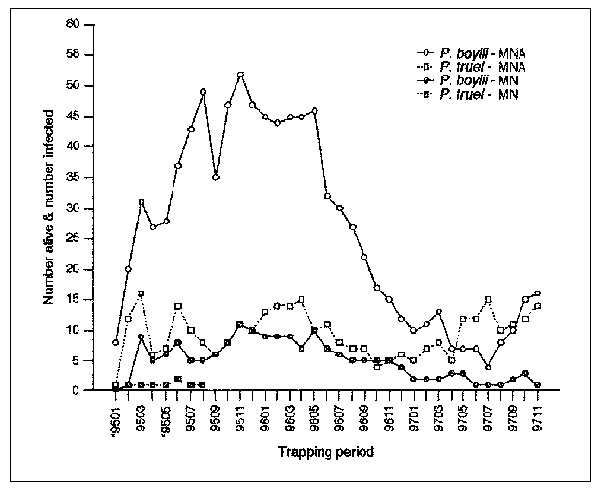Volume 5, Number 1—February 1999
Research
Long-Term Hantavirus Persistence in Rodent Populations in Central Arizona
Figure 1

Figure 1. Minimum number of Peromyscus boylii and P. truei alive (MNA) and the minimum number infected (MNI) with Sin Nombre virus (antibody-positive) at two mark-recapture webs (6.2 ha).* *Because of adverse weather conditions, we only trapped for 2 nights in January and May 1995.
Page created: December 10, 2010
Page updated: December 10, 2010
Page reviewed: December 10, 2010
The conclusions, findings, and opinions expressed by authors contributing to this journal do not necessarily reflect the official position of the U.S. Department of Health and Human Services, the Public Health Service, the Centers for Disease Control and Prevention, or the authors' affiliated institutions. Use of trade names is for identification only and does not imply endorsement by any of the groups named above.